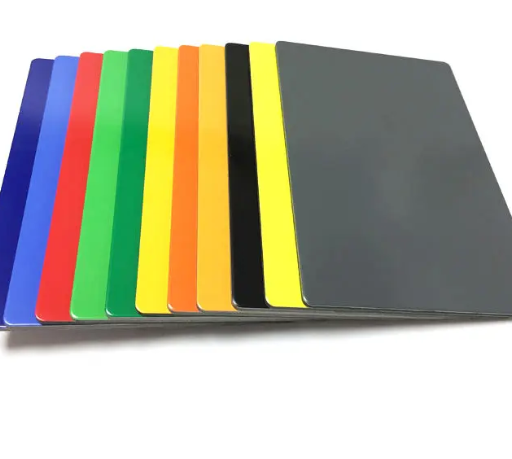Exploring the Versatility of Aluminum Composite Plates
Aluminum composite plates are a modern solution that combines aesthetics, strength, and environmental responsibility. This innovative material consists of two thin aluminum sheets bonded to a non-aluminum core, resulting in a lightweight yet highly durable panel. The combination of rigidity, design flexibility, and recyclability makes aluminum composite plates a preferred option in industries such as architecture, transportation, and advertising.
Their increasing popularity is largely driven by the global demand for sustainable materials. Aluminum composite plates not only enhance design efficiency but also minimize waste through their ability to be recycled repeatedly. This characteristic supports a more sustainable production cycle and helps companies meet environmental standards without sacrificing performance or appearance.
Aluminum composite plates continue to redefine modern construction and design by providing exceptional versatility and cost-effectiveness. Whether for building façades, cladding, or signage, their strength and adaptability deliver long-term value across multiple industries.
Advantages of Aluminum Composite Plates
Lightweight Structure with High Strength
One of the primary advantages of aluminum composite plates is their superior strength-to-weight ratio. They are significantly lighter than solid aluminum sheets, making them easier to handle and transport while maintaining exceptional rigidity. This allows for cost savings in logistics and installation, especially in large-scale projects.
Resistance to Harsh Environments
Aluminum composite plates are coated with protective layers that make them resistant to corrosion, UV radiation, and weather damage. These properties ensure their performance in both interior and exterior applications, allowing them to maintain structural stability and appearance over time.
Thermal Efficiency and Energy Control
The material’s reflective surface and thermal stability contribute to improved energy efficiency in buildings. Aluminum composite plates help reduce heat absorption, which can lower cooling costs and support sustainable design practices.
Environmental Value of Aluminum Composite Plates
Recyclability and Resource Efficiency
Aluminum composite plates are designed with recyclability in mind. The aluminum layers can be separated and reprocessed multiple times without quality loss. This closed-loop process minimizes waste and supports a sustainable production model that reduces dependency on raw materials.
Lower Environmental Impact
Compared to many other building materials, the production of aluminum composite plates consumes less energy and emits fewer greenhouse gases. Their lightweight nature also decreases transportation emissions, making them an environmentally responsible choice.
Support for Sustainable Construction
In architecture and infrastructure, aluminum composite plates contribute to green building certifications such as LEED by aligning with energy-saving and recyclability standards. Their use allows developers to meet both performance and environmental goals.

Industrial and Architectural Applications of Aluminum Composite Plates
Exterior and Interior Cladding
Aluminum composite plates are widely used in building façades and wall panels. Their smooth finish, color options, and design flexibility enable architects to create modern and aesthetically appealing structures. They are also used for interior partitions, ceilings, and decorative elements.
Commercial Signage and Displays
Businesses favor aluminum composite plates for outdoor signs and branding displays. The material’s durability and print-friendly surface ensure clear, long-lasting visuals. Its lightweight construction also simplifies mounting and maintenance.
Transportation and Industrial Solutions
In the automotive and aerospace industries, aluminum composite plates contribute to lightweight construction without compromising strength. Their application in vehicles, trains, and equipment panels helps reduce overall weight and improve fuel efficiency.
Design and Performance Benefits of Aluminum Composite Plates
Variety of Surface Finishes
Manufacturers provide aluminum composite plates in multiple finishes, including metallic, matte, mirror, and wood grain effects. These options allow for creative freedom while maintaining durability and weather resistance.
Easy Fabrication and Installation
Aluminum composite plates can be cut, bent, and shaped using standard tools. This makes them ideal for custom designs and large-scale fabrication projects, where precision and adaptability are essential.
Compliance with Safety Standards
Many high-grade aluminum composite plates are manufactured to meet international fire resistance and safety requirements. Their stable composition ensures reliable performance even under extreme conditions.
Economic Advantages of Aluminum Composite Plates
Cost-Effective Production and Maintenance
Due to their lightweight composition and long lifespan, aluminum composite plates reduce installation and maintenance expenses. Their resistance to corrosion eliminates the need for frequent repainting or surface treatment.
Longevity and Return on Investment
Aluminum composite plates offer long-term durability, making them a smart investment for commercial and industrial projects. Their consistent performance and low upkeep costs enhance overall project value.
Adaptability to Market Needs
From architectural design to industrial manufacturing, aluminum composite plates meet diverse market demands. Their flexibility and customizability make them suitable for both small businesses and large enterprises.
Technological Innovation in Aluminum Composite Plate Manufacturing
Advanced Bonding Techniques
Modern manufacturing technology ensures strong adhesion between aluminum layers and the core material. This precision bonding process enhances mechanical stability and overall durability.
Coating and Finishing Enhancements
Innovations in surface coatings have improved scratch resistance, color retention, and weather protection. These advancements ensure aluminum composite plates remain visually appealing for years.
Sustainable Manufacturing Practices
Leading manufacturers have adopted eco-friendly processes, using recycled aluminum and energy-efficient systems. These improvements support a greener production cycle and meet international sustainability standards.
Contribution of Aluminum Composite Plates to Green Building
Alignment with Environmental Certifications
Aluminum composite plates contribute to building projects aiming for LEED and other sustainability certifications. Their recyclability, low carbon footprint, and thermal efficiency make them integral to green design.
Role in Energy-Efficient Construction
The reflective surfaces of aluminum composite plates reduce solar heat gain, improving energy performance in structures. This supports energy conservation goals and enhances occupant comfort.
Long-Term Environmental Responsibility
By choosing aluminum composite plates, developers and manufacturers promote environmental responsibility. Their durability and recyclability ensure that even after decades of use, the material remains part of a sustainable cycle.
FAQ
What makes aluminum composite plates environmentally friendly
Aluminum composite plates are environmentally friendly because they can be fully recycled. The aluminum layers are reprocessable, reducing waste and conserving natural resources.
How long can aluminum composite plates be used
High-quality aluminum composite plates can last more than 20 years, maintaining their strength, appearance, and resistance to environmental damage with minimal maintenance.
Are aluminum composite plates suitable for outdoor projects
Yes, aluminum composite plates are ideal for outdoor applications due to their weather resistance, UV stability, and corrosion protection.
Can aluminum composite plates be customized for different industries
Aluminum composite plates can be customized in thickness, color, finish, and size, making them suitable for diverse uses in construction, signage, and industrial design.
Table of Contents
- Exploring the Versatility of Aluminum Composite Plates
- Advantages of Aluminum Composite Plates
- Environmental Value of Aluminum Composite Plates
- Industrial and Architectural Applications of Aluminum Composite Plates
- Design and Performance Benefits of Aluminum Composite Plates
- Economic Advantages of Aluminum Composite Plates
- Technological Innovation in Aluminum Composite Plate Manufacturing
- Contribution of Aluminum Composite Plates to Green Building
- FAQ

